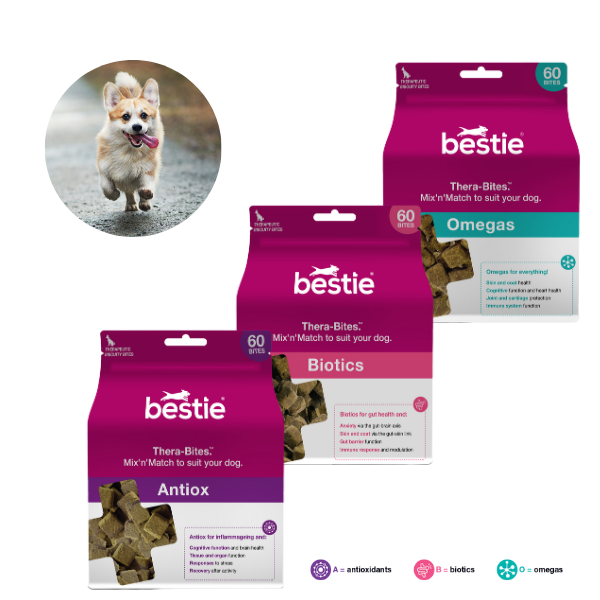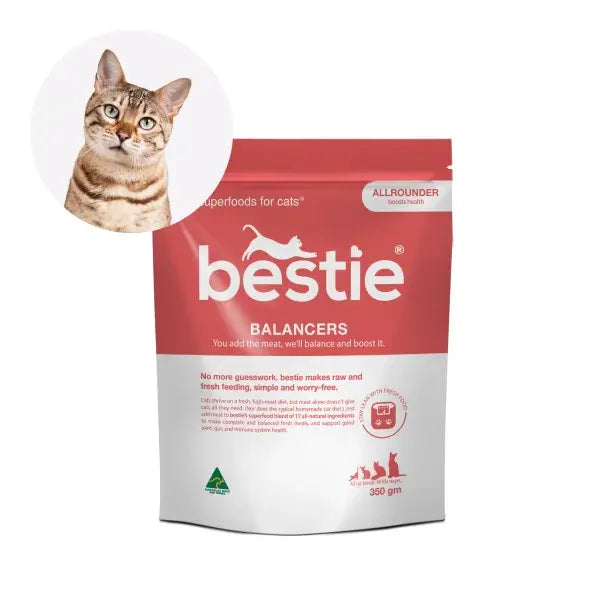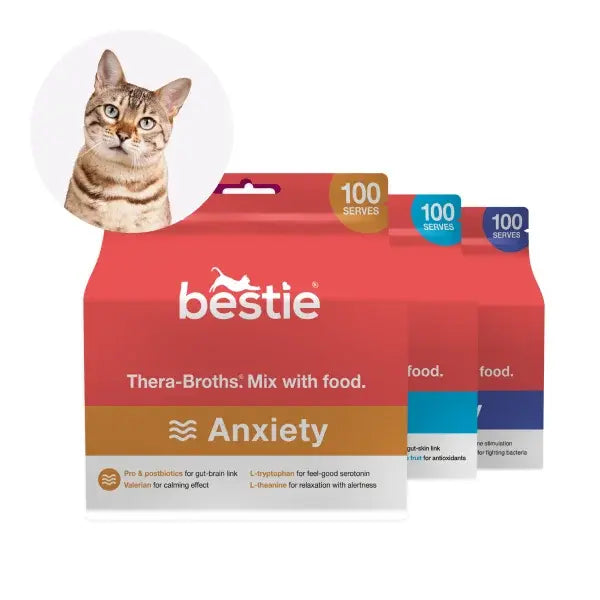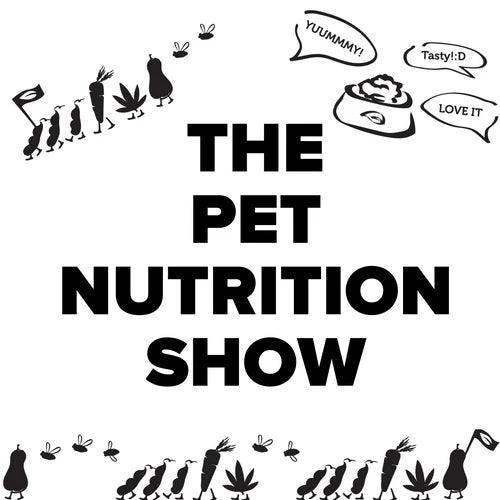Is your dog more polluting than your car? Is that cheap dry dog food better for the environment than that expensive fresh food you just had delivered? And just how much of an impact does dog food have on the environment?
We find out, in the first episode of the Pet Nutrition Show with Amanda and Dr. Anna. We'll dive into the environmental impact of pet food, discover sustainable options, and share some interesting trends in the pet food industry, as we talk with academic and food numbers guy Dr Peter Alexander. Dr Alexander is one of the authors of the first global environmental impact assessment of pet food..
Listen to this podcast here or in your podcast app, but here are the headlines:
- Dry pet food alone could account for up to 3% of all global greenhouse gas emissions.
- The diet of an average 10kg dog fed on dry food could produce GHG emissions equivalent to a fifth of a car up to 4 cars, in the UK.
- More expensive dry food tends to have more meat and therefore have a higher environmental impact. Wet food is higher again.
- The more expensive dry dog food has 7 kg of CO2 emissions per kg of food; supermarket dry dog food is about 3kg. Premium cat food is about 4.8kg and supermarket cat food is about 1.5kg.
- As people make decisions like cutting down on plane travel to save the environment, they could also consider the size and diet of their pets.
- A food tax would also price in environmental impact.
Have a listen to the show, but if you’re more of a reader, here are the notes, and the transcript:
In the first episode of The Pet Nutrition Show, Dr. Anna Sutton and Amanda look at the impact of pets on the environment, the sustainability of pet food, and food hacks that pet owners can implement at home.
They talk with food security expert Dr Peter Alexander and the author of the first global assessment of the environmental impact of pet food, about whether pets and their diets have a negative impact on the environment.
They also discuss the potential environmental benefits of insect protein in pet food, the importance of transparency in pet food manufacturing and the impact of trends like pet food premiumisation and humanisation.
The episode concludes with Dr. Anna demonstrating how to utilise leftover watermelon and yogurt to create a nutritious treat for dogs.
00:03 Introduction to the Pet Nutrition Show
00:20 Are Dogs and Cats Bad for the Environment?
01:02 Pet Q&A: Insect Protein in Dog Food
02:01 Interview with Peter Alexander: Environmental Impact of Pet Food
05:38 The Environmental Impact of Dry Pet Food
06:22 The Impact of Pet Food on Greenhouse Gas Emissions
12:58 The Role of Insect Protein in Pet Food
15:30 Policy Interventions and Carbon Tax on Pet Food
18:38 The Poo Problem: Dealing with Pet Waste
19:41 Dr. Anna's Food Hacks: Watermelon for Dogs
20:58 Conclusion: The Pet Nutrition Show
EP1: ARE DOGS AND CATS BAD FOR THE ENVIRONMENT?
[00:00:00] Peter Alexander: This is the Pet Nutrition Show with Amanda and Dr.
[00:00:07] Dr Anna: Anna. Welcome to the first episode of the Pet Nutrition Show. I'm Dr. Anna Sutton and with my co host Amanda, we'll be talking nutrition, sustainable pet food, And food hacks you can do at home. Today, we're asking the question, Are dogs and cats bad for the environment?
[00:00:26] Peter Alexander: Is having my dog more polluting than having my car? Well, it depends what your dog is, and it depends what your car is, and it depends how many miles you drive your car. So using my figures, this 10 kilogram dog would be a roughly 1, 400 miles. So roughly a fifth. Small dog, fifth of a car. Equivalent.
[00:00:43] Dr Anna: That was Peter Alexander, a global food security expert from the UK.
[00:00:48] Dr Anna: Our interview with him on the environmental impact of pet food is coming up next, but first it's Q& A.
Now Anna, I received an email during the week from a customer and she said to me that she was shocked and disappointed that we had decided to include insect protein in our dog food, which begs the question. What is good or bad about insect protein in dog food?
[00:01:19] Dr Anna: Oh, that's a great question, Amanda. Look, I'm a big fan of insect protein and insect oil for that matter. You know, insect protein, and it does depend a little bit on the type of insect, but it's got one of the most complete and balanced amino acid profiles of any alternative protein.
[00:01:36] Dr Anna: It's got a very favourable fatty acid profile too. So what that means is we absolutely can replace. The meat portion of diet, or at least part of the meat portion of a diet with insect products. And I, I think that's certainly going to be an increasing trend or a growing trend in the future.
[00:01:54] Amanda: And we will be looking at that in more detail in a few weeks.
[00:01:57] Amanda: And we also touch on this in the [00:02:00] interview to come. Our guest is an investment banker turned farmer turned senior lecturer in global food security at the University of Edinburgh. Peter Alexander.
[00:02:10] Peter Alexander: Welcome. Hi. Thank you for having me here. Now
[00:02:13] Amanda: that's a few gigs so far. So in simple terms, you're really a numbers guy.
[00:02:17] Peter Alexander: I think that's absolutely accurate to be honest.
[00:02:19] Amanda: You're also one of the authors of the first global environmental impact assessment of pet food, which was done in 2020. Which is one of the things, the key thing we're going to talk about today. So why was there a need to do that assessment? What's the problem with pet food?
[00:02:34] Peter Alexander: Well, actually, interestingly, that study came out of an argument that, uh, myself and a colleague of mine were having, you know, so basically the day job is not pet food, the day job is sort of much broader land use and food systems. And the argument was something along the lines of we shouldn't, we include the consumption of, of pets in, in, in our analysis and modeling.
[00:02:55] Peter Alexander: I said, no, it's irrelevant. Why, why, why should we kind of [00:03:00] worry about this sort of side issue? Um, and I suppose that's probably what most people were, were, were thinking at the time. I suppose my mind was changed by a paper that was published in 2017, looking at the U S and which suggested that a third of, of.
[00:03:15] Peter Alexander: Agricultural food emissions in the U. S. were associated with pets, pet food. There were a number of things that upset me, if you like, about that paper that I thought were a bit flawed, but I wanted to do it better. I suppose the The scientific way is that people react to the previous publications and trying to build upon them.
[00:03:35] Amanda: So do talk about that now, because how was yours different from those very few papers that had gone before?
[00:03:41] Peter Alexander: The key difference is really how its byproducts, particularly animal byproducts, are accounted for in that analysis. As you probably realize that many pet foods have a lot of animal byproducts, stuff that we don't necessarily want to eat ourselves, although potentially we could, you know, [00:04:00] try lungs and all sorts of things like that hard that have a relatively low value.
[00:04:06] Peter Alexander: And the question is, how do you, how do you associate those products with, uh, an environmental footprint, a greenhouse gas emission intensity or something of that nature. These other papers, they, because there isn't, you know, an LCA, a life cycle analysis that, that maybe identifies the greenhouse gas emissions associated with lambs, for example.
[00:04:27] Peter Alexander: Then what they do is they take in a beef or a lamb emission factor and use that in their calculations. And, and that kind of maybe makes some sense. Intuitively to them, I suppose it made sense and, and, and the, the alternative extreme, I suppose, is to say, well, these products are waste products. So, I mean, it's certainly by products and therefore we could associate them with no, no emissions at all because they would be produced anyway.
[00:04:55] Peter Alexander: And we have to do something with them. I think neither of those, those positions is it's probably the [00:05:00] appropriate one. And what we do, uh, is to do a sort of an economic allocation. So we look at the different, the sort of the value of the different by products and so forth. And associate the emissions with the, with the sort of the relative economic value of those different outputs.
[00:05:18] Peter Alexander: Um, which is what we did in, in this 2020 paper, but if you don't do that and you associate the emissions with the full, you know, meat in this case, then you end up obviously with a much higher total emission associated with those. Then you would otherwise using that term economic value
[00:05:38] Amanda: allocate. Was there a reason why you just chose DRIFE to look at dry pet food?
[00:05:42] Peter Alexander: Yeah, a very practical one, which is, that's the only one we had data for. Right. So no, no good reason. Only, only kind of pragmatic
[00:05:50] Amanda: ones. And of course, it's a very big part of the market.
[00:05:52] Peter Alexander: Yeah, it's something like 80%. I don't have the number to hand, but it's, it's that, it's that order. It's, it's a substantial majority.[00:06:00]
[00:06:00] Peter Alexander: This whole area, if you like is. Transparency of data is a problem and let me put it that way because there are, there are not many. Pet food manufacturers and they consider their data proprietary, understandably, but that makes analysis of what's going on very challenging.
[00:06:19] Amanda: Well let's return to that point a little bit later in the discussion.
[00:06:22] Amanda: For now, just could you talk us through some of the key results that came out of your modeling and let's start with greenhouse gas emissions. Does all dry pet food have a similar environmental impact?
[00:06:33] Peter Alexander: No. So we broke it down into four categories of cats and dogs separately. And we looked at a premium product and the sort of mid market product.
[00:06:42] Peter Alexander: And in parallel to debates related to the human food consumption, basically the, the amount of meat in the diet is kind of the primary driver for the overall footprint emissions or land use or water use. So obviously the premium products tend to have higher, higher meat [00:07:00] content. and therefore higher, higher emissions.
[00:07:03] Peter Alexander: That's also, you know, when we talk, start talking about wet pet foods, it's likely that they are, tend to have higher meat content as well, and therefore would be associated with higher, higher emission.
[00:07:13] Amanda: Can you quantify that in a way that we can get that sort of difference? I think in your paper, and I'm going from memory here, it, the premium dry food for dogs is around about seven kilos or something in that order.
[00:07:28] Amanda: Yeah,
[00:07:28] Peter Alexander: that's right. It's, it's about seven kilos. And you know, the, well, the market dog food is something around about three kilos or something the order of, of a factor of two, two and a bit between them. Cat foods are slightly lower again than dog foods. With something like one and a half for cat food and the order of just a bit less than five for the, for the premium cat food.
[00:07:51] Dr Anna: Peter, why would that be? Because cat food is typically much higher in, in dry amount of protein. So, you know, you run a dog food [00:08:00] and super premium, maybe 26 to 28 percent, usually around 28 percent protein. Dry matter basis, and then a cat's super premium cat typically runs, you know, above 30 percent protein.
[00:08:15] Dr Anna: So why are the numbers coming up lower for cat? Yeah, I
[00:08:18] Peter Alexander: mean, I don't know. I mean, they're not, they're lower between sort of, you know, five to seven for the premium product cat to dog. It's not an incredibly huge difference. It could be kind of within the range of uncertainty and the transparency of the data there.
[00:08:34] Peter Alexander: But as I said, the primary driver is, is the amount of meat and particularly ruminant meat. It could be that dog foods tend to have slightly more ruminant meat and the cat foods have, have more chicken. Yeah, I think you've
[00:08:47] Dr Anna: nailed it there. And just
[00:08:49] Amanda: harking back to the argument that you had with your colleague, that was one of the catalysts for this paper in the first place.
[00:08:55] Amanda: Is the result as irrelevant as you thought, and how does, for [00:09:00] instance, seven kilos compare to the emissions that might be involved in a human diet? Can you provide some sort of comparison there?
[00:09:08] Peter Alexander: Perhaps. In terms of the whole food system, we, we were suggesting between one and three percent of the sort of global food system emissions were associated with, with dry pet food.
[00:09:19] Peter Alexander: So we could add a bit more for wet pet food and other animals beyond cats and dogs. So. We're talking a few percentage points overall. It depends how you look at it. It's substantial, but it's not dominant. It's in that gray area where it's important, but it's not so important that people, you know, have neglected it, if you like, for valid reasons as well.
[00:09:40] Peter Alexander: You know, it's, it's within some level of, of uncertainty in some of these very complex, um, models. But it is something that we need to think about, particularly when we're thinking about individual or individual choices. It's important that we do think about it, you know, if we're cutting down on our international travel and we're thinking about our own diets, but yet we [00:10:00] have a number of large dogs that we're feeding premium pet foods or, or, or even worse kind of human grade human foods, human meat, particularly, you know, we need to think about that, those emissions as well and not, not be a blind spot in our, In our own decision making it's big, but it's not huge.
[00:10:21] Peter Alexander: I suppose is, is where I'm coming from. Somebody asked me. Are cats and dogs more polluting than cars? Clearly, that's a question doesn't, it needs to be a bit more detailed. You know, what do you mean by, what do you mean by cars? Do you mean are all cats and dogs more polluting than all cars? To which the answer is definitely not.
[00:10:38] Peter Alexander: But you know, is having my dog more polluting than having my car? Well, it depends what your dog is and depends what your car is and depends how many miles you drive your car and all of those things. So I, I took, I took my numbers and actually the, the Pedrinelli paper, which is the other one. Uh, I put them into number of miles driven per dog because in that paper, as I know, [00:11:00] you know, there's this statistic about a 10 kilogram dog and what feed it would be required to consume and how much, what the emissions would be associated with that dog.
[00:11:11] Peter Alexander: So I've taken that dog and put it into a number of miles of an average UK pet per car. The answer is, uh, so if you take the Pedrinelli 10 kilogram dog and you feed it dry pet food by the Pedrinelli dog, I mean, the Pedrinelli figures for the 10 kilogram dog, it's, uh, 4, 000 miles, wet pet food under that dog, it's 32, 000 miles, roughly equivalent to about four cars on an average distance that's driven in the UK.
[00:11:42] Dr Anna: You'd be a bit pushed to drive that far in the UK, wouldn't you?
[00:11:46] Peter Alexander: Yeah, I suspect, I suspect you drive further on average than we drive. I,
[00:11:50] Amanda: I think we most definitely do, just so I've got that right. So that's four times the annual driving distance, if you like, or, or four [00:12:00] cars driving the annual amount.
[00:12:01] Peter Alexander: Yeah, four car, four average petrol cars driving the average distance for a car in the UK.
[00:12:08] Peter Alexander: Annually. Yeah, you could have four cars, which would be equivalent to a 10 kilogram dog. And a 10 kilogram dog, as you know, is a small dog. Yes. Now, obviously, if you had a. 40 kilogram jog, that would be 16 cars, which is a lot of cars. It's a lot of cars. But as we, as, uh, as you know, I'm not really, I'm not really supporting those figures.
[00:12:29] Peter Alexander: I don't think that's, so using my figures, however, this 10 kilogram jog would be a roughly 1, 400 miles. So roughly, you know, a fifth of a car. This small dog, fifth of a car, which I think is more plausible.
[00:12:46] Amanda: So there are some key pet food trends, though, that are potentially making that situation even worse, even though we can't attribute an exact number to that wet pet food.
[00:12:56] Amanda: Or what do you see those, those trends might
[00:12:58] Peter Alexander: be? I think we can see [00:13:00] two sets of kind of contradictory, if you like, trends in the pet food market. We have this premiumization, humanization of pet foods, you know, higher meat on the one hand, and then we have on the other hand, sort of more focused on sustainability, plant based diets, vegan dog foods, et cetera.
[00:13:19] Peter Alexander: And also, you know, we can talk about insects and other sort of alternatives. Uh, sources for protein, uh, in the foods, there's two trends, one towards more human like foods, higher emissions fundamentally, and the alternative kind of sustainable trends. And
[00:13:38] Amanda: so you mentioned insect protein before, you know, is that one of the, or, you know, products that contain insect protein, is that one of the more sustainable food choices that people could make and what might some others be?
[00:13:49] Peter Alexander: Well, maybe it's probably the quick answer. I may be depending on what those insects themselves have eaten. And that's why these things also get, you know, really quite [00:14:00] complex, really quite quickly. So if those insects are reared on one, some waste stream or some by product stream that has a very low value and very low embedded sort of carbon content in terms of emissions.
[00:14:14] Peter Alexander: Then it could be great. You know, it could be a really good source of protein that can be provided in a lowish emissions way. Whereas, you know, if those insects are actually, you know, crops that were, had a higher value that could have been used for other things are being provided to, to rear those insects then, and obviously the advantages are much lower because you've still got a sort of another trophic level to go through.
[00:14:38] Peter Alexander: Those, those There are still losses. They may be much more efficient than a ruminant, for example, but still there are losses associated with that. So it depends, is the quick answer.
[00:14:50] Amanda: Is there an argument for pet food manufacturers to do some better marketing to get people more comfortable with animal byproducts?
[00:14:57] Amanda: Because there's certainly been such a reaction to. [00:15:00] Oh, I wouldn't eat that, so my furry, you know, my little fur child shouldn't eat that either. What's your opinion
[00:15:05] Peter Alexander: about that? Yeah, maybe. I mean, maybe the answer is that we should be eating it. Uh, it's slightly changing your, your, your question, but, uh, I mean, one of the things that we could do better with our food system more broadly than pets is actually, you know, for the animals that we do have is to eat more of them and to be less squeamish about eating.
[00:15:25] Peter Alexander: Uh, I mean, and that, that applies to our pets as well, but it, but it applies to us too. And
[00:15:30] Amanda: in your paper, you also suggest some policy interventions, including perhaps a carbon tax on pet
[00:15:36] Peter Alexander: food. Yeah. I mean, well, carbon tax on, on foods more generally, but yeah, yes, specifically pet food. I mean, obviously one way of internalizing that externality, you know, of making, having a price signal of the, of the environmental burden of food is, is through taxation.
[00:15:54] Peter Alexander: You know, we have a situation today where merit very often subsidies, uh, [00:16:00] provided to, to the livestock sector to encourage production where those, those externalities, you know, the greenhouse gases and loss of biodiversity and all the things are, are not, are not costed. And we're kind of therefore overproducing relative to some sort of social optimal level taxation or changing and or changing those subsidy regimes as a way of.
[00:16:21] Peter Alexander: Of trying to correct for that, um, correct for that. I mean, the other obvious way or two obvious ways of reducing the impact pets, well, clearly we could have fewer pets, but that might not be considered acceptable. So the, the other maybe more acceptable. Alternative would be to have smaller pets, at least fewer pets per household, perhaps, but you know, we can move down from a, a great Dane and a St.
[00:16:48] Peter Alexander: Bernard's to a Jack Russell. The scale and particularly in terms of dogs is so large that, you know, that would actually have a pretty material. So, you know, that we doesn't [00:17:00] have to be. There doesn't have to be this price signal through, through taxation about what types of food. It can be also how much food by reducing the sort of the mass of the pet, even if it isn't the number of pets.
[00:17:13] Dr Anna: Well, that was Peter Alexander, the food numbers guy, clearly. Now the point about transparency is a really good one. I think it's definitely an ongoing debate in pet food. And, you know, regulations are changing in both the U S and Australia to, to reflect this and to try and make pet food more transparent to, to the consumer.
[00:17:36] Dr Anna: But there's something else I want to touch on as well. And that's some of the trends that you talked about, particularly about the growth and humanization trend or the movement towards eating more premium food. And one of my largest concerns, particularly in emerging pet nations, for example, like China, is the trend to ever increasing levels of protein, way in excess of what our dogs [00:18:00] and cats actually need.
[00:18:01] Dr Anna: And we're talking, you know, maybe a third to a half of more protein than in a standard economy or, or medium priced formulation. You know, that's a, that's a lot of protein when you think about the number of pets in those nations.
[00:18:17] Amanda: And, and we're going to look in more detail about just how much protein does a dog or cat really need.
[00:18:23] Amanda: Because I think there is this. Idea in many consumers minds that more is better, but that's not necessarily the case. Now, you had another insight from today, and it's a little bit at the other end of the dog. That's
[00:18:37] Dr Anna: right, Amanda. You know, what goes in comes out, and by that I mean poo. And, you know, well, you probably, well, you will know that the average 10 kg dog probably generates around 150 to 200 grams of poo a day, depending on what you feed it, of course, sometimes do a lot more and sometimes do a bit, a bit less, but that adds up when say you've got [00:19:00] 67 million dogs as you have in the US and even in Australia, we've got around 6 million odd dogs or so.
[00:19:07] Dr Anna: So that's more or less a thousand tons of poo a day that has to be dealt with somehow. And we'll talk more about poo in another episode, I'm sure. I do recall seeing a, a nice little idea where you, you have streetlights driven by essentially poo energy generators. Oh,
[00:19:24] Amanda: I love that. The poo lights. That's right, the
[00:19:27] Peter Alexander: poo lights.
[00:19:29] Amanda: Well, we will pick up more on poo in a future episode. Stay tuned for that, folks. And now, it's time for Dr. Anna's Food Hacks.
[00:19:41] Peter Alexander: It's time for Home Food Hacks with Dr. Anna.
[00:19:44] Dr Anna: Hi, guys. Well, I'm back in my kitchen now, and I've had a look in my fridge, and there's really not a lot there, actually. I did find this.
[00:19:52] Dr Anna: So, melon for dogs. They're fantastic. It's really rich and Vitamin C, which is fabulous to support their immune system. [00:20:00] It is also high in water, so it helps with hydration. And it's got a natural sweet taste, and dogs absolutely love sugar. It's not very good for them, but they do love it. So as a bit of a treat, melon's not bad.
[00:20:12] Dr Anna: So I'm just going to scrape off the red bit. Don't give them the green bit, by the way, because that will upset their tummy. Pop it in a blender. And then the other thing I found in my fridge, a tiny bit of yogurt. It contains lactose, and dogs are sensitive to lactose. And live yogurt like this contains live bacteria strains, and that is great for your dog's gut.
[00:20:32] Dr Anna: So, you don't need to have a massive chunk of fruit or veg to use. You, you just use what you've got, and you're trying to just get the last bit of value. Out of every bit of food you've got in your fridge. And there's
[00:20:45] Peter Alexander: a fair bit
[00:20:49] Dr Anna: of water come out of that. You can see how much water watermelons actually got in it.
[00:20:53] Dr Anna: So I'm just going to split that between the two dogs and their bowls and that will be fine for them. The
[00:20:58] Peter Alexander: Pet Nutrition [00:21:00] Show is proudly presented by Planet A Pet Food. Bringing dogs a flexitarian diet that's good for them and the planet.
Join us in future episodes of the Pet Nutrition Show as we dig deeper into topics like the ideal protein content for pets, the importance of gut health, and the role of pet food in waste management. Let's create a sustainable and healthy future for our pets and the environment.
Follow us on Facebook or Instagram to get updates or ask questions we can cover in future episodes.
References:
Peter Alexander, Aiden Berri, Dominic Moran, David Reay, Mark D.A. Rounsevell,
The global environmental paw print of pet food, Global Environmental Change, Volume 65, 2020
Pedrinelli, V., Teixeira, F.A., Queiroz, M.R. et al. Environmental impact of diets for dogs and cats. Sci Rep 12, 18510 (2022).


















